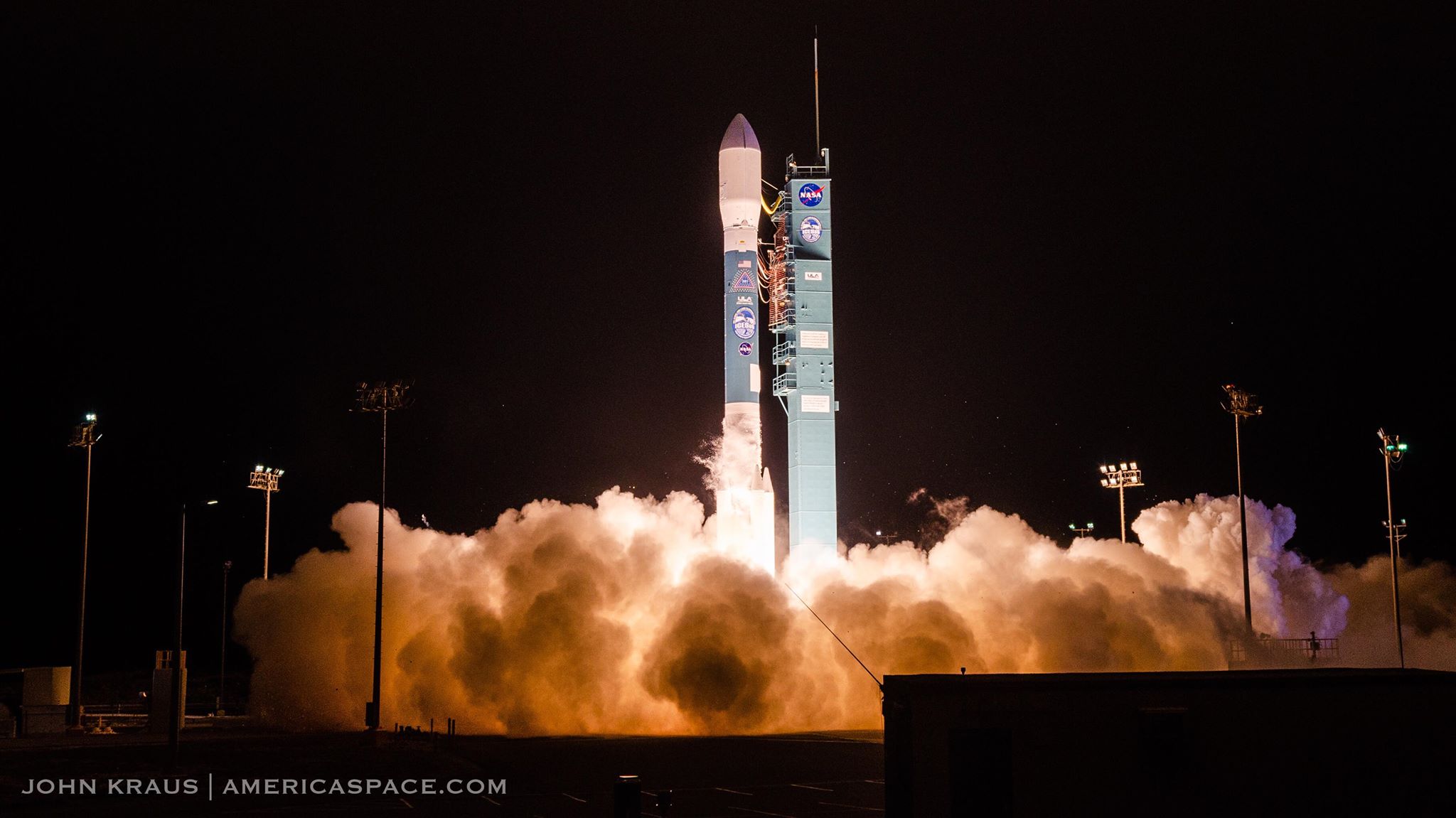'Godspeed Delta II', Historic Workhorse Rocket Delivers ICESat-2 to Orbit On 155th And Final MissionBy Ben Evans, on September 15th, 2018
 The final United Launch Alliance (ULA) Delta II rocket launch with the NASA Ice, Cloud and land Elevation Satellite-2 (ICESat-2) onboard, Saturday, Sept. 15, 2018, Vandenberg Air Force Base in California. The ICESat-2 mission will measure the changing height of Earth’s ice. Photo Credit: John Kraus / AmericaSpace
The final United Launch Alliance (ULA) Delta II rocket launch with the NASA Ice, Cloud and land Elevation Satellite-2 (ICESat-2) onboard, Saturday, Sept. 15, 2018, Vandenberg Air Force Base in California. The ICESat-2 mission will measure the changing height of Earth’s ice. Photo Credit: John Kraus / AmericaSpace(...) In traditional style, the Delta II for this morning’s launch of ICESat-2 received a four-digit designation of “7420”, which describes its membership of the 7000-series of the rocket (“7”), the presence of four (“4”) strap-on, solid-fueled Graphite Epoxy Motors (GEM)-40, the presence of a second stage (“2”) and the absence (“0”) of an upper stage. In February 2018, the two halves of the Delta II’s 27.9-foot-tall (8.5-meter) payload fairing arrived at Vandenberg, followed by the 19.7-foot-long (6-meter) second stage a few weeks later and finally the 85.6-foot-long (26-meter) first stage, which was unpacked from its shipping container and readied for pre-launch processing on 16 April. Early in June, the first stage was raised to the vertical in the SLC-2W Mobile Service Tower (MST) and the four strap-on boosters were installed at its base. Next came the “interstage”, which provides a connection point with the second stage, which was itself hoisted atop the stack on 21 June.
In readiness for launch, the first stage was loaded with 66,140 pounds (30,000 kg) of a highly refined form of rocket-grade kerosene, known as “RP-1”, after which the Launch Director conducted a poll for liquid oxygen tanking. All told, the Delta II required 147,710 pounds (67,000 kg) of oxidizer to propel ICESat-2 into near-polar orbit. Weather briefings, wind assessments and cryogenic topping occupied much of the final hour of Saturday morning’s countdown.
Originally targeting 5:46 a.m. PDT, the launch time was pushed back a bit to resolve a temperature issue on the rocket’s second stage. A new liftoff time of 6:02 a.m. PDT was then targeted. And while there was some fog, it was thin enough at the launch site to allow people to actually see the launch, as Vandenberg is notorious for thick fog and only launches being heard, not seen. Weather was 100% GO.
Thus began a flurry of activity as the Delta II transitioned to Internal Power and the ordnance and ignition systems of the four GEM-40 strap-on boosters were armed for flight. Propellant tanks were confirmed at flight pressure and at T-60 seconds the Launch Enable Switch was moved to “Flight Mode”. At 30 seconds to go, the liquid oxygen fill-and-drain valves were closed for flight and the welcoming call of “Green Board” confirmed that all relevant stations were declaring no issues which might prevent an on-time liftoff. The Delta II’s ignition system was armed at T-10 seconds, allowing for a rapid sequence of events. The RS-27A first-stage engine roared to life at T-2.7 seconds, followed by the ear-rattling crackle of the four GEM-40s at T-0. Piercing the pre-dawn darkness, the 155th and last Delta II took flight under a combined thrust in excess of 640,000 pounds (290,000 kg).(...)
http://www.americaspace.com/2018/09/15/godspeed-delta-ii-historic-workhorse-rocket-delivers-icesat-2-to-orbit-on-155th-and-final-mission/Workhorse Delta II Stands Ready at Vandenberg for Final Launch on SaturdayBy Ben Evans, on September 14th, 2018
(...) Primary payload for Saturday’s mission is ICESat-2, part of NASA’s Earth Observing System (EOS) and devoted to measurements of ice-sheet mass balance, land topography—including cities, lakes and reservoirs—and vegetation-canopy characteristics on a global scale. During its minimum three-year mission, the spacecraft will investigate how melting polar ice-sheets contribute to sea-level change and climate change. ICESat-2 data will also estimate sea-ice thickness to examine the exchange of energy, mass and moisture between the ice, ocean and atmosphere and measure vegetation canopies worldwide as part of efforts to shed new light on large-scale biomass change. (...)
http://www.americaspace.com/2018/09/14/workhorse-delta-ii-stands-ready-at-vandenberg-for-final-launch-on-saturday/